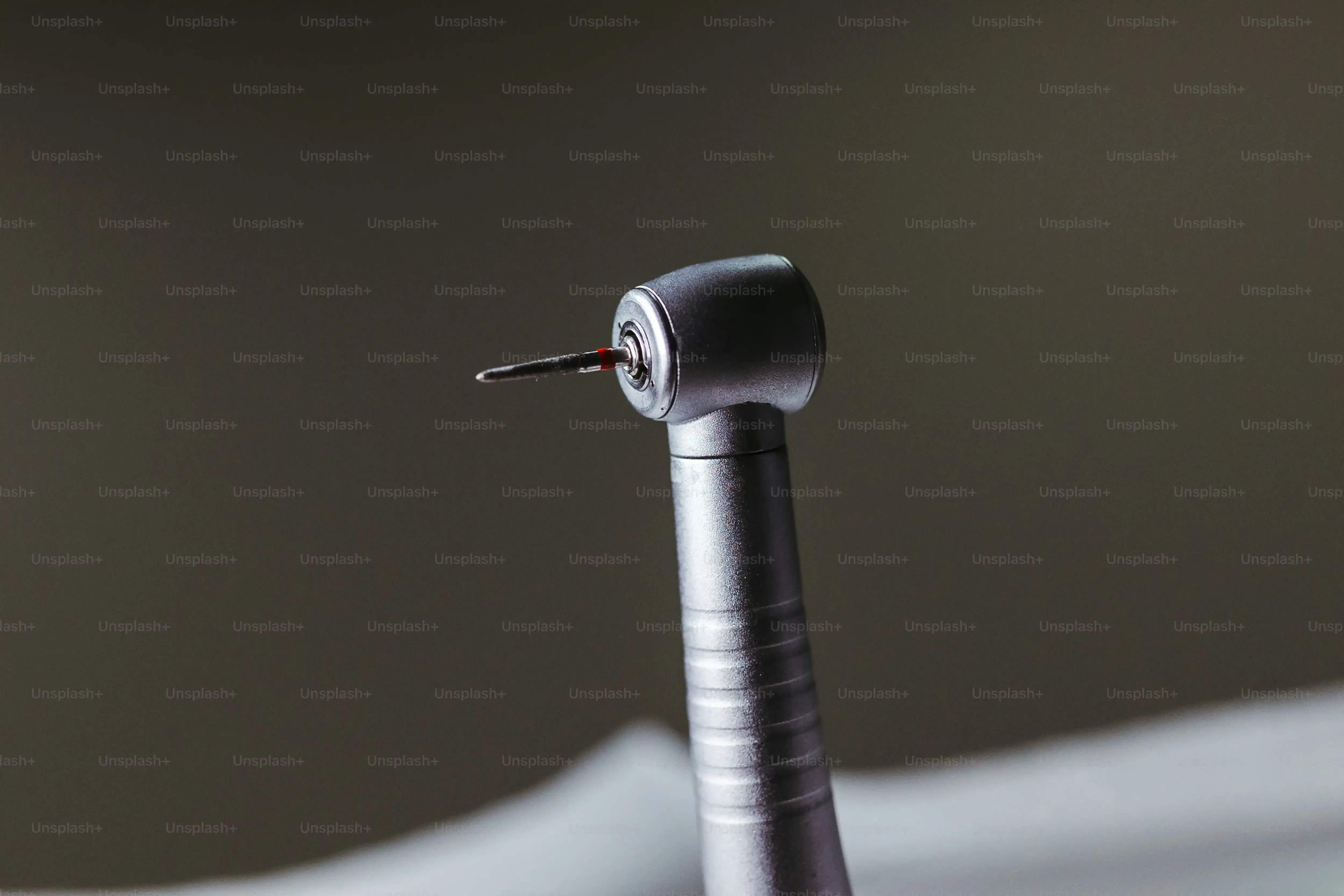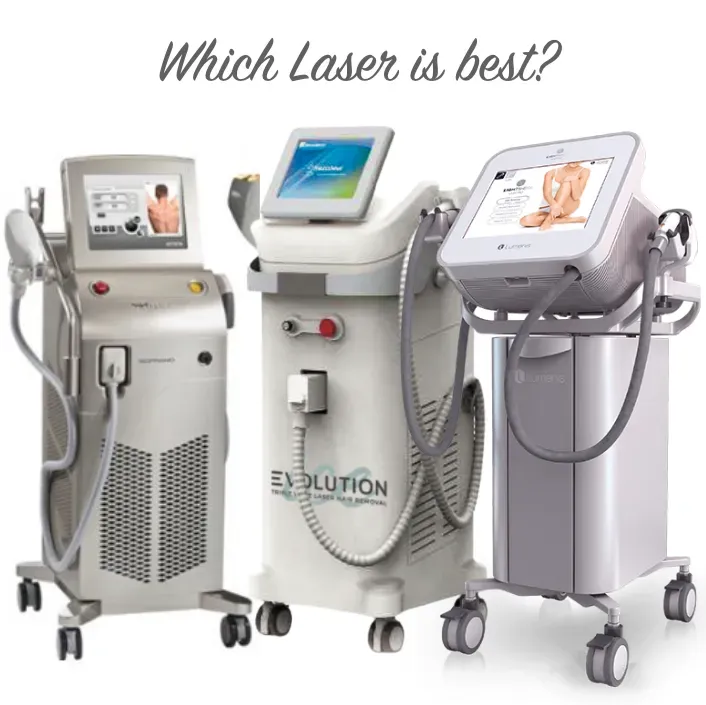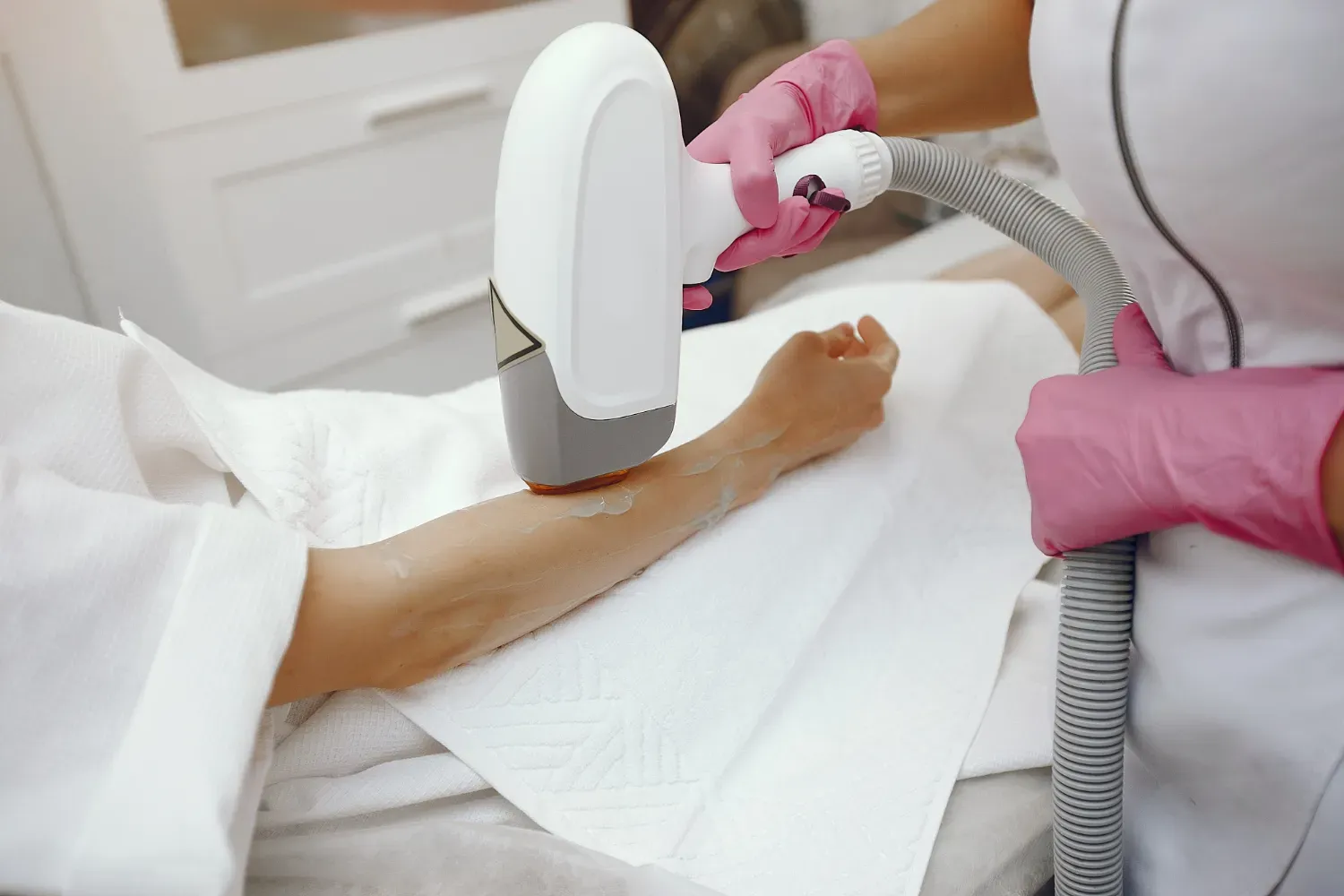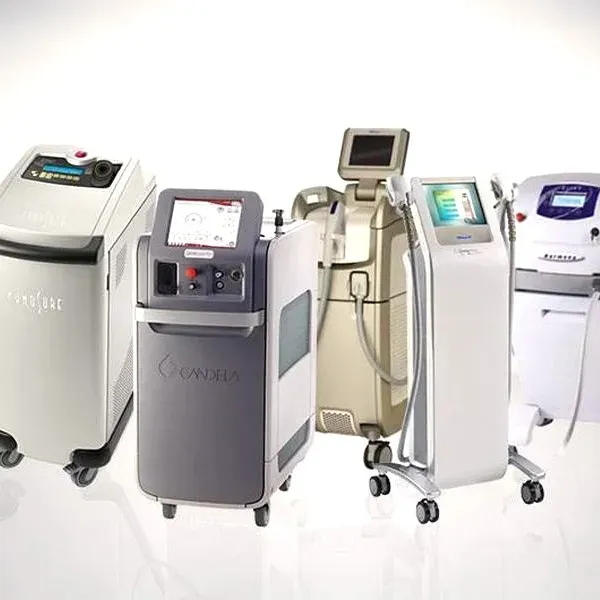Table of Contents
Tired of the endless cycle of shaving, waxing, or plucking? You're not alone. The promise of smooth, hair-free skin is appealing, but navigating the world of laser hair removal can feel like stepping into a technical jungle. With various machines and technologies out there, figuring out which one is right for you often leads to more questions than answers. Is there really a single best type of laser hair removal machine? The truth is, it's not quite that simple. What works wonders for one person might be less effective, or even risky, for another. Your skin tone, hair color, and even the area you want treated all play a significant role in determining the optimal approach. This article will cut through the noise, explaining the different types of laser technologies available, what makes each unique, and the crucial factors you need to consider to find the machine and treatment plan that delivers the results you're actually hoping for, without the guesswork.
Exploring the Best Type of Laser Hair Removal Machine Technologies

Exploring the Best Type of Laser Hair Removal Machine Technologies
The Alexandrite Laser: Fast and Effective for Lighter Skin
When people talk about finding the best type of laser hair removal machine, the Alexandrite laser often comes up first, especially if you have lighter skin. This machine uses a specific wavelength of light, 755 nanometers, which is really good at targeting the melanin pigment in hair. Think of it like a heat-seeking missile for dark hair on fair skin. It's known for being one of the fastest lasers out there, covering larger areas relatively quickly. Sessions can feel zippy, which is a definite plus if you're treating bigger spots like legs or a back. However, because it targets melanin so effectively, it's generally not the go-to for darker skin tones, as it could cause pigmentation changes or burns. It's powerful, yes, but its power is best suited for a specific canvas.
The Diode Laser: A Versatile Workhorse
Then you have the Diode laser. This one operates at a longer wavelength, typically around 800-810 nanometers. This allows the light to penetrate a bit deeper into the skin, which can be beneficial for certain hair types and skin tones. Unlike the Alexandrite, the Diode laser offers more versatility. It's often considered a solid choice for a wider range of skin tones, from fair to medium-dark. It still targets melanin, but its wavelength makes it slightly less aggressive on the skin's surface pigment compared to the Alexandrite. While it might not be quite as fast for large areas, many clinics rely on Diode lasers because they strike a good balance between effectiveness and safety across a broader patient base. It's the reliable sedan of the laser world – gets the job done for most people.
"The right laser isn't about the flashiest tech, it's about the one matched precisely to your biology."
Matching Your Skin and Hair to the Right Laser Machine

Matching Your Skin and Hair to the Right Laser Machine
Why Your Skin Tone Matters (Hint: It's About Melanin)
let's get down to brass tacks. Choosing the best type of laser hair removal machine isn't a one-size-fits-all deal because, well, our skin and hair are incredibly different. The biggest factor is melanin, the pigment that gives your skin and hair color. Lasers work by targeting this pigment in the hair follicle. If your skin has a lot of melanin, a laser that's too aggressive or uses the wrong wavelength can accidentally target the pigment in your skin instead of just the hair. This is where things can go wrong, leading to burns, hyperpigmentation (dark spots), or hypopigmentation (light spots). This is why professionals often use the Fitzpatrick Skin Type scale (ranging from I - very fair to VI - very dark) to figure out which laser wavelength is safest and most effective for you. Ignoring this step is like trying to use a hammer to screw in a lightbulb – you'll probably just break something.
Hair Color and Texture Play a Role Too
Beyond skin tone, your hair's color and texture are equally important pieces of the puzzle when Matching Your Skin and Hair to the Right Laser Machine. Lasers are most effective on dark, coarse hair. Why? Because dark hair has the most melanin for the laser to target. Fine or light-colored hair (blonde, red, gray) often doesn't have enough pigment for the laser to "see" it effectively. This is why some people are told they aren't good candidates for laser hair removal, or why results might be less dramatic on certain hair types. The thickness of the hair also matters; thicker hair typically absorbs more laser energy, leading to better damage to the follicle. A skilled technician assesses both your skin type and hair characteristics to recommend the laser and settings that offer the best chance for successful hair reduction.
So, how does your skin and hair type match up with laser tech?
- Fair Skin (Fitzpatrick I-III) with Dark Hair: Often ideal candidates for Alexandrite or Diode lasers.
- Medium Skin (Fitzpatrick IV) with Dark Hair: Diode lasers are typically a safer and effective choice.
- Dark Skin (Fitzpatrick V-VI) with Dark Hair: Nd:YAG lasers (which we'll discuss next) are generally the safest and most effective option due to their longer wavelength.
- Light/Fine Hair: Laser hair removal may be less effective regardless of skin type.
Comparing the Best Laser Hair Removal Machine Options

Comparing the Best Laser Hair Removal Machine Options
Enter the Nd:YAG Laser: Safety for Darker Skin
so we've talked about Alexandrite for lighter skin and Diode for a broader range. But what if you have darker skin? This is where the Nd:YAG laser steps in. It operates at a much longer wavelength, around 1064 nanometers. Why does that matter? This longer wavelength bypasses the epidermis (the top layer of your skin) more effectively, going deeper to target the hair follicle with less risk of damaging the surrounding skin pigment. For Fitzpatrick skin types V and VI, the Nd:YAG is often considered the safest and most effective option. It's not as fast as the Alexandrite, and some people report it feels a bit different, maybe a deeper heat sensation. But when safety on darker skin is the priority, this machine is the gold standard. Trying to use an Alexandrite on dark skin is just asking for trouble, frankly. The Nd:YAG is built for this specific challenge, making it a crucial player when Comparing the Best Laser Hair Removal Machine Options.
What About IPL? (It's Not Quite a Laser)
You'll also hear about IPL, or Intense Pulsed Light. Now, technically, IPL isn't a laser. Lasers use a single, concentrated wavelength of light, like a laser pointer. IPL uses a broad spectrum of wavelengths, more like a flashbulb. It still targets melanin, but because it's less focused, it's generally less effective for permanent hair reduction compared to true lasers. It can work for some people, especially those with fair skin and dark hair, but it often requires more sessions, and the results might not be as long-lasting. Think of IPL as the budget option; it might get you part of the way there, but it's not the heavy hitter that a dedicated laser is. When you're seriously Comparing the Best Laser Hair Removal Machine Options for lasting results, lasers like Alexandrite, Diode, and Nd:YAG are usually where the conversation should focus.
So, putting it simply:
- Alexandrite: Best for lighter skin, fast sessions.
- Diode: Good all-rounder for light to medium-dark skin.
- Nd:YAG: Safest and most effective for dark skin tones.
- IPL: Not a laser, generally less effective for permanent reduction, might work for very specific cases but often requires more treatments.
What Makes a Laser Hair Removal Machine "Best"? Factors to Weigh

What Makes a Laser Hair Removal Machine "Best"? Factors to Weigh
It's Not Just the Name on the Box: Wavelength and Power Output
let's be real. You see clinics advertising the "latest and greatest" machine, but the brand name itself doesn't guarantee stellar results or safety. When asking yourself What Makes a Laser Hair Removal Machine "Best"? Factors to Weigh, the technical specs are far more important than the marketing hype. The wavelength, as we've discussed, is crucial for targeting melanin safely based on skin type. An Alexandrite (755nm) is fantastic for fair skin, but a disaster on dark skin. An Nd:YAG (1064nm) is the reverse. Then there's the power output, often measured in Joules per square centimeter (J/cm²). This dictates how much energy is delivered to the follicle. Too low, and you're wasting your time and money. Too high for your skin type or the area, and you risk burns and pigmentation issues. A powerful machine in the wrong hands, or with the wrong settings, is just a fancy paperweight that can cause real damage. It's the right wavelength combined with appropriate, adjustable power that starts to define a good machine.
Spot Size and Repetition Rate: Efficiency Matters
Beyond the core laser type and power, two other technical bits significantly impact the effectiveness and efficiency of a laser hair removal machine: spot size and repetition rate. The spot size is literally the size of the area the laser hits with each pulse. A larger spot size means the technician can cover more skin area faster. Think of it like painting a wall with a roller versus a tiny brush. For legs or backs, a machine with a decent spot size makes a huge difference in treatment time. The repetition rate is how quickly the laser can fire pulses. A higher repetition rate also speeds things up. A machine might be the theoretically correct type for you, but if it has a tiny spot size and slow repetition rate, your sessions will drag on, potentially costing you more time and money in the long run. For clinics trying to be efficient and clients wanting quicker appointments, these features are key considerations in What Makes a Laser Hair Removal Machine "Best"?
So, when evaluating the hardware, consider:
- Wavelength: Does it match your skin type? (755nm, 800-810nm, 1064nm are the main players)
- Power Output (Fluence): Can it deliver enough energy for effective treatment, but is it also adjustable for safety?
- Spot Size: Larger sizes mean faster treatments for big areas.
- Repetition Rate: How quickly can it pulse? Faster pulses mean quicker sessions.
- Cooling System: Does it have built-in cooling (like cryogen spray, contact cooling, or air cooling) to protect the skin and improve comfort?
The Cooling System: Comfort and Safety Aren't Optional
Let's not overlook something critical: the cooling system. Laser hair removal involves heat – that's how it disables the follicle. Without adequate cooling, that heat lingers on the skin's surface, leading to pain, discomfort, and potentially burns, especially with higher energy settings. The best type of laser hair removal machine often integrates a sophisticated cooling mechanism directly into the handpiece. This could be a blast of cryogen gas just before the laser pulse, a cooled tip that touches the skin, or a powerful air cooling system. Good cooling doesn't just make the treatment bearable; it allows the technician to use more effective energy levels safely. A machine might tick all the boxes for wavelength and power, but if it skimps on cooling, the experience will be unpleasant and the safety compromised. Always ask about the machine's cooling system before you commit to a treatment. Your skin will thank you.
Safety and Results: Choosing the Right Laser Machine and Provider

Safety and Results: Choosing the Right Laser Machine and Provider
Why the Person Operating the Machine Matters More Than the Machine Itself
so we've dissected the machines – the Alexandrites, Diode, Nd:YAG, and even touched on IPL. You might think knowing the specs is enough to guarantee good results, but honestly, the single biggest factor in Safety and Results: Choosing the Right Laser Machine and Provider isn't the fancy hardware; it's the human being holding the handpiece. A top-of-the-line laser in the hands of someone inexperienced or poorly trained is a recipe for disaster. They might use the wrong settings for your skin type, miss spots, overlap too much and cause burns, or simply not understand how to adjust the treatment based on your skin's reaction. I've heard horror stories about people going to places that bought a cheap machine and hired someone with minimal training just to offer the service. It's like giving a Formula 1 car to a teenager who just got their learner's permit. The potential is there, but the skill and knowledge are missing. Always prioritize the technician's expertise and the clinic's reputation.
Asking the Right Questions Before You Commit
So, how do you vet the provider and ensure they know their stuff? Don't be shy about asking questions during your consultation. Any reputable clinic will welcome them. Ask about the specific type of laser machine they use and, more importantly, *why* they use it for your particular skin and hair type. A good technician can explain the science behind the wavelength and energy settings they plan to use. Ask about their training and experience with that specific machine and with treating clients who have a similar skin tone and hair color to yours. How long have they been performing laser hair removal? What's their protocol for handling potential side effects? A confident, knowledgeable response is a good sign. If they seem hesitant, vague, or rush you, that's a red flag. This isn't a quick haircut; it's a medical-aesthetic procedure that requires precision and understanding.
Here are some questions to ask during your consultation:
- What type of laser machine will be used for my treatment?
- Why is this machine the best choice for my skin type and hair color?
- What are the specific settings (wavelength, fluence, pulse duration) you plan to use?
- What is your training and experience with this machine and procedure?
- How many laser hair removal treatments have you performed?
- What are the potential side effects, and how are they managed?
- What kind of cooling system does the machine have?
- What results can I realistically expect?
- How many sessions do you anticipate I will need?
Realistic Expectations and the Journey to Smooth Skin
Finally, let's talk about results and managing expectations. Even with the best type of laser hair removal machine and a highly skilled technician, laser hair removal is a process, not a one-time fix. It typically requires a series of sessions (usually 6-8 or more) spaced several weeks apart because hair grows in cycles, and the laser is most effective on hair in the active growth phase. You won't be perfectly smooth after the first session, and you might need occasional touch-up sessions down the road. It's about *reduction*, not necessarily *permanent removal* of every single hair follicle for the rest of your life. Some follicles might be stubborn, or new ones might become active over time due to hormonal changes. A good provider will be upfront about this. They won't promise you the moon after three sessions. They'll explain the science, show you before and after photos of clients with similar characteristics, and give you an honest assessment of what's achievable. The journey to significantly reduced, manageable hair is absolutely possible with the right machine *and* the right hands guiding it. Checking out hairawaybylaser.com can provide more insights into professional treatment options and technologies.
Choosing Your Laser Machine: It's Not One-Size-Fits-All
So, is there a single "best type of laser hair removal machine"? As we've seen, the answer is a firm "it depends." The right machine for you hinges on your unique skin tone, hair color, and even the specific area you're looking to treat. Alexandrite lasers might be great for lighter skin, while Nd:YAG is often the go-to for darker tones. Diode lasers cover a lot of ground in between. The tech matters, sure, but so does the skill of the person operating it. Don't get fixated on just the machine name; focus on finding a reputable provider who understands these nuances and can recommend the technology best suited to your individual needs. After all, the goal isn't just zapping hair; it's doing it safely and effectively for *you*.
